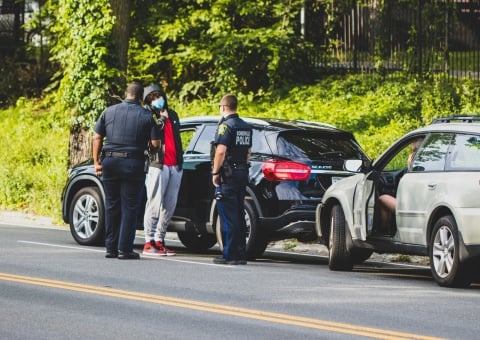Moving day is already one of the most exhausting experiences most people go through. You’re juggling boxes, coordinating movers, dealing with utility companies, trying to find the coffee maker in a sea of sealed containers, and that’s all before lunch. Now imagine, on top of that chaos, getting into a car accident. Whether it’s a minor fender bender or something more serious, an accident on moving day feels like a cruel joke.
What makes this situation even more complicated is that most people aren’t thinking clearly in the moment. You’re tired, stressed, and probably not in the mood to deal with yet another disaster. But here’s the thing: what you do right after the accident, mainly how well you document everything, can have a significant impact on what happens next.
Let’s discuss why documenting everything after a moving day car accident is crucial. Seriously, it’s not just a good idea. It could protect you in ways you don’t even see coming.

You’re in Shock, Your Memory Won’t Be Reliable Later
Most people are unaware of the significant impact adrenaline has on their memory. Immediately after an accident, your body enters a state of fight-or-flight mode. That might help you react quickly in the moment, but it also means your brain isn’t filing away memories like it usually would. Details get fuzzy. Time feels weird. You might forget simple things, such as which direction the other car came from or what was said between you and the other driver.
That’s why it’s so important to start documenting right away. Take pictures, jot down notes, or record voice memos if your hands are full – whatever works for you. Because even if you think you’ll remember everything later, you probably won’t. Having something written or visual to go back to is a lifesaver when your memory starts to fade.
Insurance Companies Will Want Proof
Let’s be honest, no one loves dealing with insurance companies. But if you’ve ever filed a claim before, you know how much they rely on evidence. They’re not just going to take your word for what happened. They’ll want to see proof, and the more you can provide, the smoother things will go.
Photos of the damage, the position of the vehicles, the street signs, and the weather all help tell the story. If you’ve got timestamped pictures and a clear written description of the accident, your insurance rep will have a much easier time defending your claim. Without that, you could end up stuck in a he-said-she-said situation that takes weeks to sort out, or worse, gets denied altogether.
Legal Protection if Things Get Complicated
Now let’s talk about the not-so-fun possibility of legal trouble. Perhaps the other driver will change their story. Maybe someone claims they were injured. Maybe your moving truck clipped a parked car, and now the owner wants compensation. In any of these cases, what you documented right after the accident can make all the difference.
If you’re in a city like Cincinnati, where traffic and busy moving days are a typical mix, knowing your legal options is even more critical. In situations where liability is disputed or injuries are involved, speaking with a Cincinnati Car Accident Lawyer can help you understand what to expect and how to protect your rights.
If the situation becomes more serious than expected, particularly with injuries or extensive property damage, hiring a car accident attorney can make the process smoother. A good lawyer will help with insurance negotiations, legal paperwork, and make sure you’re not left paying out of pocket for someone else’s mistake.
Your notes and photos become your backup. That’s not just for lawsuits, either. It can be helpful if the police report is missing information or if someone attempts to alter the truth later. Your records can clear up confusion and protect you from false claims. Think of it like an insurance policy for your side of the story.
You Might Miss Damage That Shows Up Later
Sometimes, a car appears fine immediately after a crash. Then, a few days later, the check engine light comes on, or you notice your steering feels off. The same goes for injuries. Perhaps you walked away feeling okay, but a week later, your neck begins to hurt. That’s more common than people think.
If you don’t have documentation from the scene, it can be hard to prove those issues were related to the accident. You don’t want to be in a situation where your insurance won’t cover repairs or medical costs because they think the damage happened later. By documenting everything as soon as it happens, you create a timeline that links any delayed problems to the accident itself.
It Helps You Stay Organized When Everything’s in Chaos
Moving day is not exactly a calm, peaceful experience. You’re probably dealing with last-minute packing, phone calls, pets escaping out the door, kids asking for snacks, and a dozen other distractions. An accident adds another layer of chaos. In that kind of mess, it’s easy to forget details or lose track of what you’ve done.
Writing things down or taking photos keeps you organized. It helps you remember which tow company took your car, what the other driver’s license plate was, or where your damaged boxes ended up. When you finally have time to breathe and deal with the paperwork, you’ll thank yourself for keeping track of it all.
Tips on What to Document
You don’t have to be a lawyer, insurance agent, or professional investigator to gather strong documentation after an accident. You just need to slow down for a few minutes, stay calm, and cover the basics. The goal is to create a clear record of what happened, who was involved, and what was damaged because even the smallest detail could be important later.
Here’s a deeper look at what to document and why it matters.
1. Take Photos of Everything
Right after ensuring everyone is safe, start snapping pictures, lots of them. Don’t just focus on your car; take shots of all vehicles involved, even if the damage looks minor. Get both close-up photos of the damage (scratches, dents, broken lights) and wide shots that show how the cars ended up on the road.
It’s also smart to photograph:
- Traffic signs and signals
- Skid marks or broken glass
- Street names or intersections
- The general weather conditions, such as wet roads and fog.)
These images help paint a complete picture of the scene and can support your version of events later. Your memory might fade, but photos don’t lie.
2. Get Clear Shots of License Plates
It sounds simple, but it’s one of the most critical steps. Always get a clear photo of every license plate involved. If you only write it down, you might misread a digit or letter later on. Having photographic proof helps avoid confusion and ensures your insurance or legal team can track down the right people if needed.
Even if you think it’s just a small bump and the other driver seems cooperative, don’t skip this step.
3. Collect Driver Information
Ask for and record the following from every driver involved:
- Full name
- Phone number
- Insurance company and policy number
- Driver’s license number
- Make, model, and color of their vehicle.
Use your phone to take a picture of their driver’s license and insurance card. That way, you have everything stored digitally in case you misplace a piece of paper or forget a detail later.
4. Talk to Witnesses
If anyone nearby witnessed the accident, including pedestrians, people in nearby cars, or store employees, politely ask if they’re willing to give a statement or share their contact information.
Even a brief description from a neutral third party can help clear up confusion about who was at fault. Juries, insurance adjusters, and judges all take witness accounts seriously. You don’t need a signed affidavit; just a quick voice memo or note with their name and phone number is a huge help.
5. Write Down Personal Notes While It’s Fresh
As soon as you have a second to catch your breath, write down what happened in your own words. Do it right there at the scene, or at least later that same day.
Try to include:
- In what direction were you and the other driver heading
- The exact time and date of the accident
- The location (be as specific as possible)
- What the other driver said to you, if anything
- What were you doing right before the crash?
Think of this as your version of the story. It doesn’t need to be fancy — even a few paragraphs in your phone’s notes app can be incredibly helpful later if questions come up.
6. Document Moving Details Too
Since this is a moving day accident, don’t forget that your belongings may also be affected. If you’re driving a rental truck or your vehicle is packed with furniture, boxes, and electronics, be sure to inspect it for damage. Even a minor collision can cause things to get jostled.
Take photos of:
- Cracked TVs or broken appliances
- Furniture with dents, scratches, or snapped legs
- Boxes that were crushed or opened in the crash
- The overall condition of your cargo space
If movers were involved, make a note of what was loaded and who was handling it. If your items were already insured, your documentation can help you claim with the moving company or its insurance provider.
7. Save Every Related Receipt, Email, or Text Message
The paper trail doesn’t stop at the scene. In the days and weeks that follow, you might be dealing with:
- Repair shops
- Tow trucks
- Rental cars
- Chiropractors or doctors
- Movers or storage companies
Save every receipt, email, text, or invoice connected to the accident or the move. It might seem like overkill at the time, but these little documents can add up to hundreds or even thousands of dollars in compensation. It’s better to have it and not need it than to need it and not have it.
Pro tip: Create a folder in your phone’s photo gallery or a dedicated notes app to store all accident-related information. That way, everything is in one place and easily accessible when you need it.
Conclusion
Accidents are always unexpected, and when they occur during a stressful event like moving day, they can feel even more overwhelming. But taking just a few extra minutes to document everything can save you from weeks or even months of extra stress down the road.
Whether it’s helping with your insurance claim, protecting you from legal trouble, or just keeping you sane in the middle of a hectic day, good documentation is one of the most powerful tools you have after a car accident.
So if the worst happens on your moving day, remember this: take the picture, write it down, and save every little detail. Your future self will be glad you did.
We hope you found this blog post on Document Everything After a Moving Day Car Accident, useful. Be sure to check out our post on Legal Representation in Car Accidents & Commercial Vehicles for more great information!
Have Experience in the Moving Industry? Want an Additional Income Stream? Work With All Around Moving!
Join this unique opportunity of our Work With Us program! Apply your expertise in the moving industry, team up with us and we’ll help you make money. Click here to learn more.





